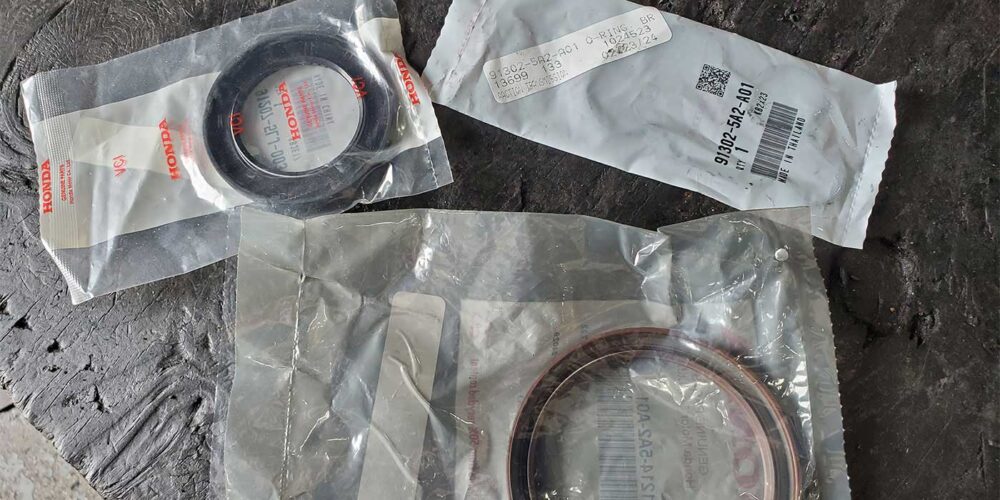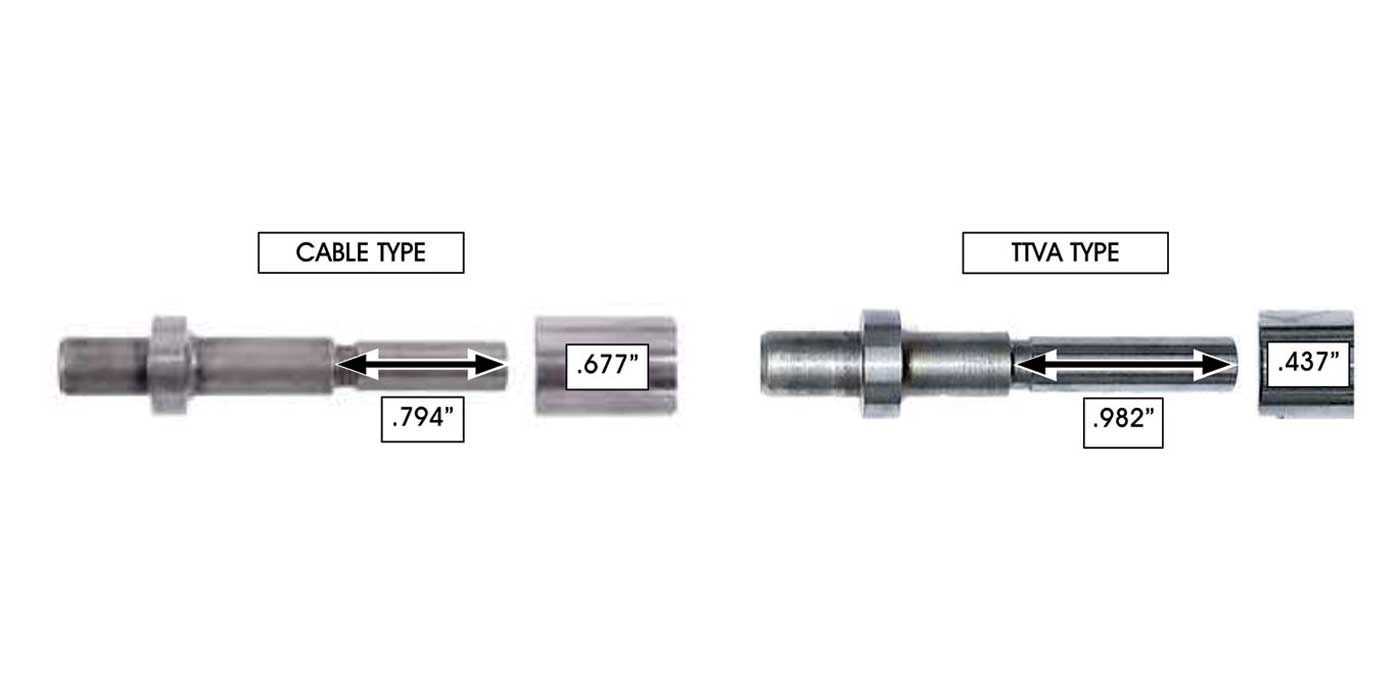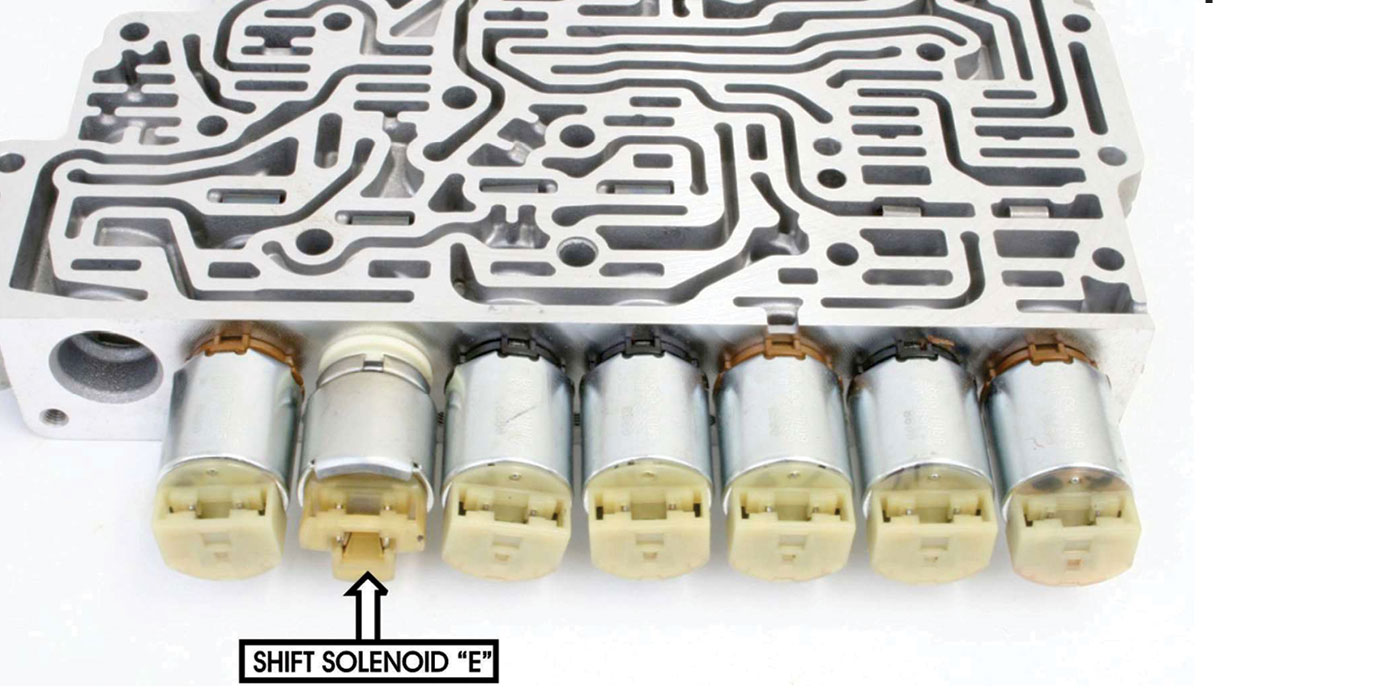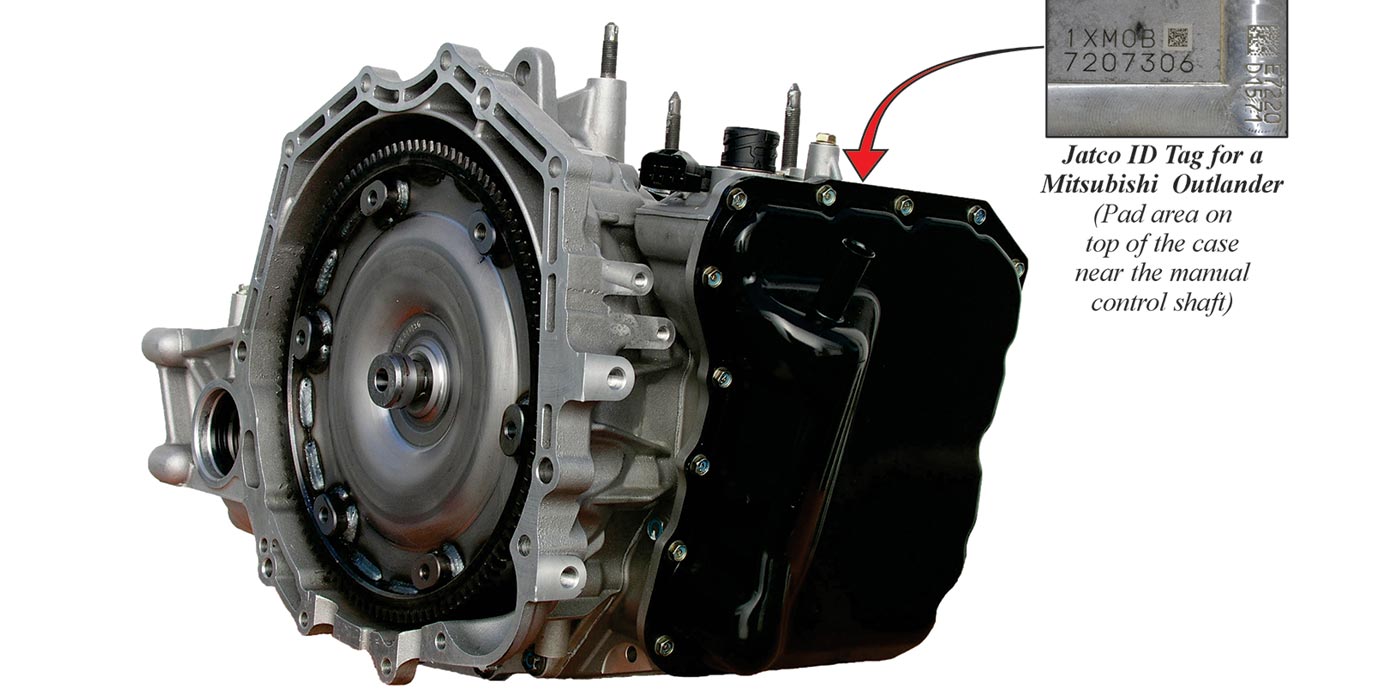A 2016 Honda CRV 2.4L (Figure 1), using a BLJA CVT 4WD transmission (Figure 2) comes in to a shop with a customer complaint of a leak.
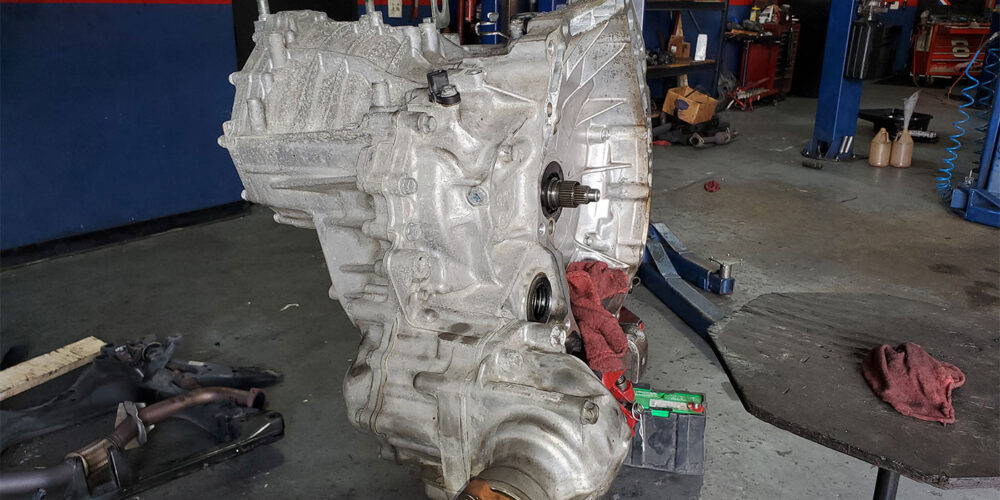
Before anyone checked fluid levels, the vehicle was hoisted up for a look. A visual inspection revealed a leak coming from between the transmission and the engine. The fluid color was indistinguishable, making it difficult to know if it was transmission fluid or engine oil. With transmissions leaking from the front seal being more common than a rear main engine oil leak, it’s not too far-fetched for a tech to assume the leak is coming from the transmission. Falling into pattern failure repairs can at times come back and bite you in the you-know-what. In this case, techs lowered the vehicle and checked the fluid levels. This revealed a loss of engine oil, not transmission fluid.
When the transmission was removed, the front seal area of the transmission was dry, confirming there was not a leak there (Figure 3).

After removing the drive plate from the crankshaft for a full view of the engine block (Figure 4), the leak from the engine became apparent.
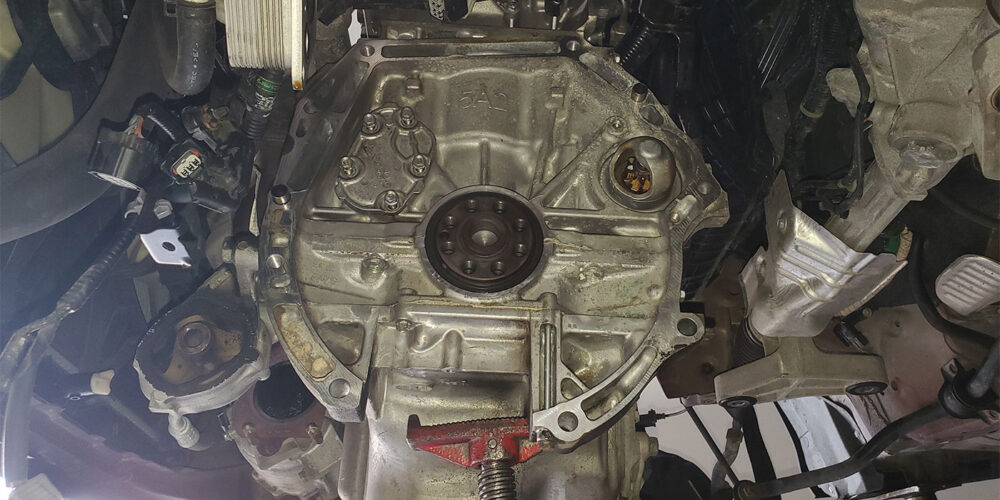
In the upper left side of the rear of the block there is an oil/air separator cover known as a Breather. It was from this cover the oil leaked (Figure 5).
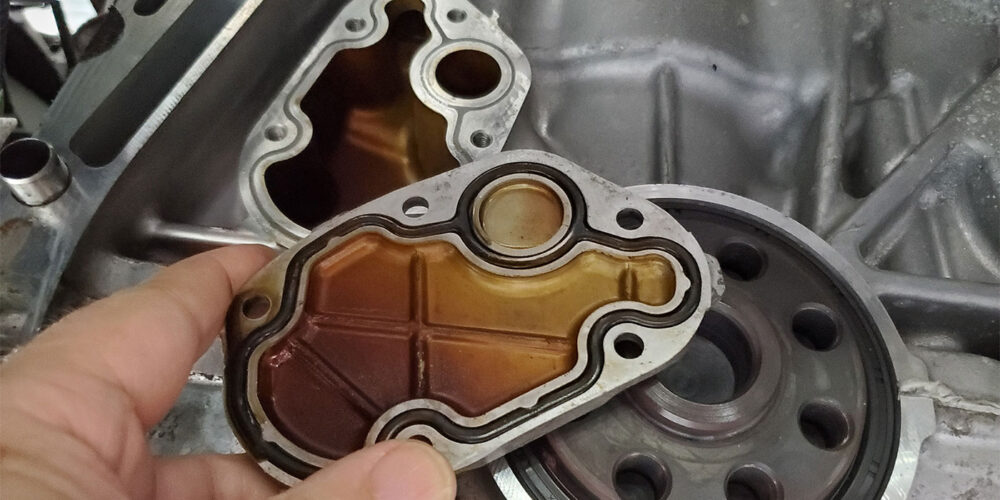
The O-ring seal for the cover from hondapartsnow.com listed for under $9, part number 91207-5LJ-003. The shop decided to change the rear main oil seal and front transmission seal since these were already accessible, providing a quality service for the customer (Figure 6).
